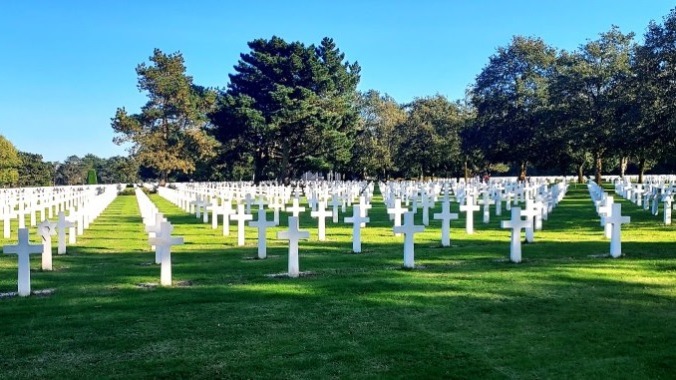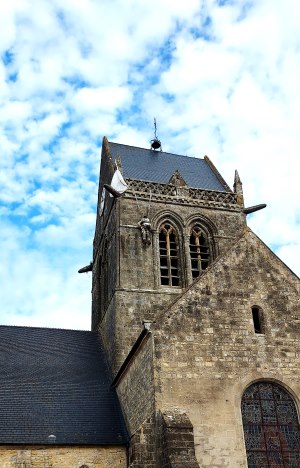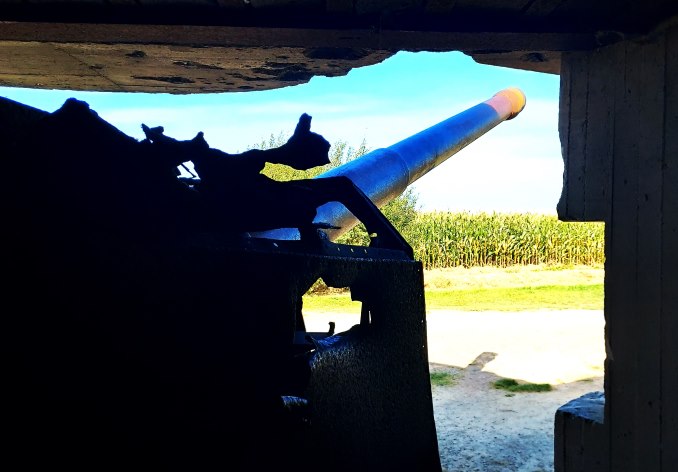Normandy: Walking the Beaches and Towns Where History Pivoted
Photos by Geoffrey Himes
Like many people, I’d been to Paris a few times, and I’d driven through the Van Gogh country of Southern France. But I’d never set foot in the province of Normandy in the north along the English Channel. The most pivotal battles of World War II were fought there, and dozens of Impressionist canvases in museums around the world were painted there. All those high-bluff beaches, hedge-hemmed fields and poplar-lined rural roads still exist, waiting to be explored.
Thus it was that I found myself in the French village Sainte-Mere-Eglise this past September. It was here on June 6, 1944, that American paratroopers floated down behind German lines in the early-morning darkness. Many of them landed far from their intended target, but enough organized themselves to storm the crucial crossroads town in the first American battle of that crucial day.
There in the center of town is the same square-towered church steeple that one saw in all the black-and-white photos of the 1944 battle, the same church that was filmed in the movie The Longest Day with Red Buttons playing Private John Steele, the paratrooper who got hung up on the tower balcony as gunfire zinged below. There was no gunfire in 2023, but a cotton-stuffed dummy hung from his parachute in the same position as Buttons and Steele.

Like most of the towns along the northern coast, Sainte-Mere-Eglise has a museum full of World War II artifacts gathered by the locals after the armies had moved on—and donated by veterans who returned to the scene many years later, eager for the same immersive connection we were after. This museum focused on paratroopers, naturally, and it was filled with parachutes, jeeps, tanks and actual planes—not replicas but actual equipment from the battle.
Like the other museums we would see, this one offered explanations in the form of timelines and texts. Explanations were what we were after. How did the Allies manage to surprise the Germans with a risky, cross-Channel invasion and break through Hitler’s Atlantic Wall and finally conquer Germany? How did that create the world that we grew up in? Why do we nonetheless face so many threats from a resurgent fascism today? It would take more than one battle site and one museum to satisfy our curiosity.
The first battle on D-Day was fought not by the Americans in Sainte-Mere-Eglise but by the Brits in Benouville an hour to the east. British soldiers had arrived in silent gliders—often crashlanding in nearby, hedge-edged farms—and had taken the crucial Benouville Bridge over the Orne Canal from the surprised Germans. That proved easier than defending the bridge from the counterattack by no-longer-surprised, more numerous Germans, but the Brits succeeded at that as well. And the bagpipes played as reinforcements arrived from the landings at Sword Beach.
-

-

-

-

-

-

-

-

-

-

-

-

-

-

-

-

-

-

-

-

-

-

-

-

-

-

-

-

-

-

-

-

-

-

-

-

-

-

-

-









































